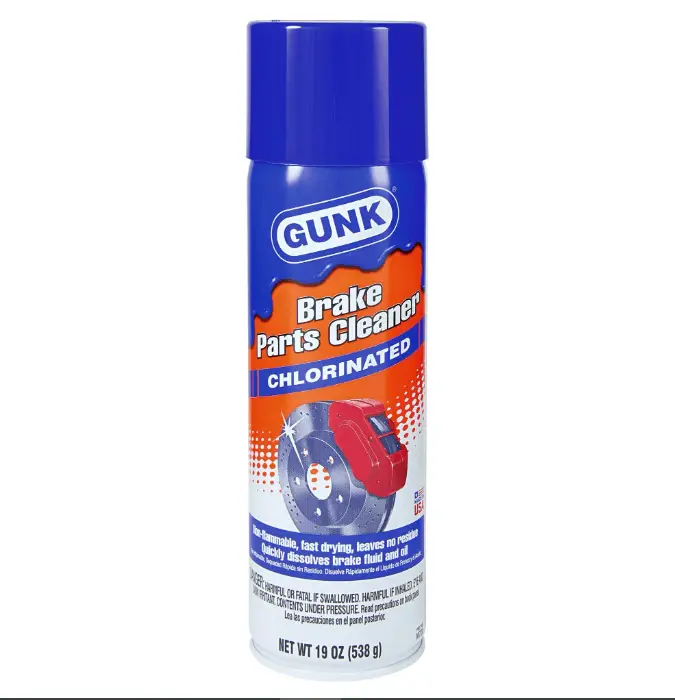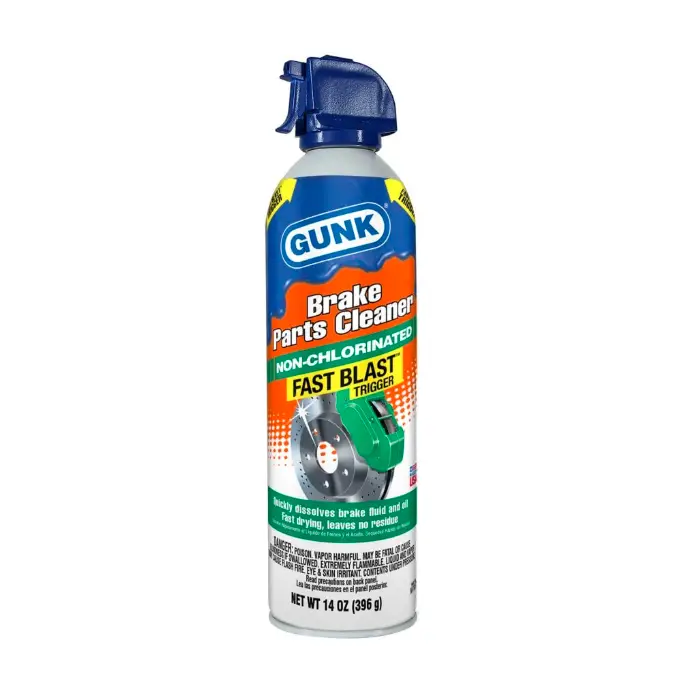Chlorinated brake cleaners are powerful and quick-drying but toxic and environmentally harmful. Non-chlorinated cleaners are safer and eco-friendly but flammable and less effective. Choose based on cleaning needs and safety priorities.
Brake cleaners are essential products in the automotive industry, used for cleaning brake parts, removing grease, oil, and other contaminants that could impair brake performance. Two primary types of brake cleaners exist in the market: chlorinated and non-chlorinated. Both have distinct chemical compositions, advantages, and drawbacks, making the choice between them crucial depending on specific needs.
In this blog post we will discuss about the details of each type, their differences, uses, and which one might be best for your requirements.

Contents
Chlorinated Brake Cleaner
Chlorinated brake cleaners primarily consist of chlorinated solvents such as perchloroethylene (PERC) or trichloroethylene (TCE). These compounds are highly effective at dissolving grease, oil, and other contaminants.
Advantages:
- Superior Cleaning Power: The chlorinated solvents are extremely efficient at cutting through heavy grease and grime without the need for excessive scrubbing.
- Quick Drying: Chlorinated cleaners evaporate rapidly, leaving no residue behind, which makes them ideal for quick cleaning tasks.
- Non-Flammable: This type of brake cleaner is generally non-flammable, reducing the risk of fire hazards during use.
Disadvantages:
- Toxicity: Chlorinated solvents are highly toxic and can pose significant health risks if inhaled or if they come into contact with skin. They can cause irritation, dizziness, and long-term exposure can lead to severe health issues.
- Environmental Impact: Chlorinated brake cleaners can contribute to air and water pollution if not disposed of properly. Their chemical composition can be harmful to the environment.
- Cost: These cleaners are often more expensive due to their superior cleaning capabilities and specialized handling requirements.
Non-Chlorinated Brake Cleaner
Non-chlorinated brake cleaners typically contain hydrocarbons like heptane, acetone, or other alcohol-based solvents. They avoid the use of chlorinated compounds, making them a safer alternative for some applications.
Advantages:
- Safer for Use: These cleaners are generally less toxic and pose fewer health risks compared to chlorinated versions. They are less likely to cause severe irritation or long-term health problems.
- Environmentally Friendly: Being free from chlorinated solvents, non-chlorinated brake cleaners are less harmful to the environment, especially when properly disposed of.
- Cost-Effective: Non-chlorinated options tend to be more affordable and widely available.
Disadvantages:
- Flammability: Most non-chlorinated cleaners are flammable, posing a fire risk if used near open flames or high-temperature areas.
- Slower Drying: They tend to evaporate more slowly than their chlorinated counterparts, which might leave a residue if not thoroughly wiped off.
- Lower Cleaning Power: While effective, non-chlorinated cleaners may require more effort or multiple applications to achieve the same level of cleanliness as chlorinated versions.

Comparison Table for Chlorinated VS Non-Chlorinated Brake Cleaner
| Feature | Chlorinated Brake Cleaner | Non-Chlorinated Brake Cleaner |
|---|---|---|
| Primary Solvents | PERC, TCE | Heptane, Acetone, Alcohol-based |
| Cleaning Power | High | Moderate |
| Drying Speed | Fast | Moderate to Slow |
| Flammability | Non-Flammable | Flammable |
| Toxicity | High | Low to Moderate |
| Environmental Impact | High | Low |
| Cost | Higher | Lower |
When to Use Each Type
Chlorinated brake cleaners are best for heavy-duty, quick-drying needs, while non-chlorinated ones are safer and more eco-friendly for general maintenance.
Chlorinated Brake Cleaner:
- Ideal for heavy-duty cleaning where quick drying and high cleaning power are necessary.
- Suitable for professional automotive workshops where time efficiency is critical.
- Best for scenarios where fire hazards need to be minimized.
Non-Chlorinated Brake Cleaner:
- Preferable for DIY enthusiasts or situations where user safety and environmental impact are a concern.
- Suitable for applications where flammability can be managed, and there’s no immediate rush for quick drying.
- Great for general maintenance and less intense cleaning tasks.
Frequently Asked Questions
Here are some FAQs about chlorinated vs non-chlorinated brake cleaner –
1. Can I use non-chlorinated brake cleaner on all parts of my vehicle?
Yes, non-chlorinated brake cleaners are versatile and can be used on various vehicle parts, including brakes, clutches, and other metal surfaces. However, avoid using them near high-temperature areas due to their flammability.
2. Is chlorinated brake cleaner safe for home use?
While effective, chlorinated brake cleaners are best used with caution in well-ventilated areas. Due to their toxicity, they are more suited for professional settings with appropriate safety measures.
3. What safety precautions should I take when using brake cleaner?
Always use brake cleaners in a well-ventilated area, wear protective gloves and eyewear, and avoid inhaling the fumes. Keep the cleaner away from open flames and heat sources, especially if it’s non-chlorinated.
4. Can brake cleaner damage my vehicle’s paint?
Yes, both chlorinated and non-chlorinated brake cleaners can damage vehicle paint. It’s crucial to avoid contact with painted surfaces and wipe off any accidental spills immediately.
5. How should I dispose of used brake cleaner?
Brake cleaners, especially chlorinated ones, should be disposed of as hazardous waste. Follow local regulations for disposal, and never pour them down the drain or into the soil.
Conclusion
When its come to choosing between chlorinated and non-chlorinated brake cleaner depends on many criteria, including the level of cleaning required, safety concerns, and environmental considerations. Chlorinated cleaners offer superior cleaning power and quick drying but come with higher health and environmental risks.
Non-chlorinated cleaners are safer and more eco-friendly but may require more effort to achieve the same cleaning results. Always prioritize safety and proper usage to ensure optimal performance and minimal risk.